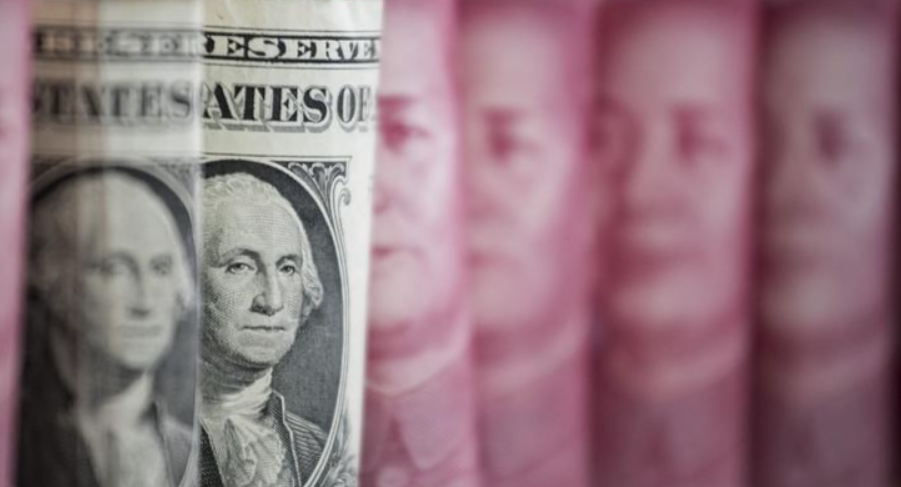- Financial Blogs
- December 24, 2024
- Comments(366)
Fed Rate Cut Expectations Boost U.S. Treasury Rally
Advertisements
Last week, renewed expectations for a rate cut by the Federal Reserve sparked a rebound in the U.S. Treasury market. However, investors appear to be waiting for additional evidence to determine the sustainability of this rebound. In the coming week, the Treasury market will face a new round of challenges with the auctioning of fresh government debt.
The recent economic data from the U.S. labor department has raised eyebrows, with April’s non-farm payrolls coming in significantly below expectations. This unprecedented underperformance, coupled with an uptick in the unemployment rate and a slower pace of wage growth, has led to a swift increase in the market’s expectations for a Fed rate cut this year. The sensitivity of Treasuries, particularly the U.S. 10-year bond yield, was evident as it dipped to a two-week low of 4.453% last Friday before settling down by 6.9 basis points to close at 4.501%. Over the past week, this benchmark yield has dropped a total of 16.7 basis points, marking the steepest weekly decline in 2023. Similarly, the 2-year Treasury yield hit a three-week low of 4.716% before retreating to approximately 4.809%. This yield fell by 19 basis points, accounting for the most significant weekly drop since early January.
Following the non-farm employment report, CME Group's FedWatch Tool indicated that the expectation for a Fed rate cut in September surged to 77%, a marked increase from about 60% the previous week. Pricing in swap contracts also reflected this shift, suggesting anticipated cuts of around 50 basis points for the year, up from nearly 41 basis points prior to the report’s release. This indicates a full re-emergence of expectations for two rate cuts within the year. Looking forward, multiple Fed officials are set to make appearances this week after ending their “blackout period,” which is likely to influence market views on future interest rate trajectories.
Moreover, this week, the Treasury market is gearing up for a new series of auctions, which includes a staggering $67 billion in 10-year and 30-year bonds. This will serve as a litmus test for investors' appetite for long-term debt. In addition to these, the Treasury will be auctioning $58 billion in 3-year bonds as part of its quarterly refunding process.

While some analysts acknowledge the signs of a slowdown in certain sectors of the U.S. economy, they caution that inflation remains a complicated issue. This persistent inflation could potentially restrict the Fed's ability to lower rates, implying that Treasury yields may linger within their recent ranges. Mark Lindbloom, a portfolio manager at Western Asset Management, reflected, “The latest non-farm payroll report and comments from Fed Chair Powell provided the market with some reassurance, but we’re not about to forecast that Treasury yields will simply drop by 50 to 100 basis points.”
Ryan Swift from BCA Research has a different outlook, anticipating that “over the next couple of months, the 10-year Treasury yield will remain within a broader trading range, with an upper limit tied to the cyclic peak seen in October of last year and a lower limit close to the 3.80% mark observed earlier this year. Ultimately, we expect yields to break below this range, but first, investors need to see additional weakening in labor market data.”
In terms of trading strategies, many Treasury investors are gravitating towards steepening yield curve trades. They believe that although the resurgence of rate cut expectations would generally benefit bonds across all maturities, the current 4.5% yield on the 10-year note, among the highest levels seen since 2007, may not appear enticing if inflation continues to exceed the Fed’s target, compounded by the potential for escalating long-term Treasury auction sizes due to increased government spending.
Typically, if the Fed initiates rate cuts and the market adjusts its pricing based on weaker data, the 2-year Treasury yield tends to decline faster than the benchmark 10-year yield. The catch, however, is that unless inflation diminishes alongside further frailty in economic data, the longer-dated Treasuries may struggle to keep pace with their shorter-term counterparts. The mixed signals from the economic data, including last Friday’s employment report, highlight this conundrum. In contrast to the employment figures, another report released last week indicated that price pressures within the U.S. manufacturing and services sectors remain stubbornly persistent.
George Catrambone, head of fixed income at DWS Americas, has expressed a stronger preference for 2-year Treasuries, affirming that the outlook for shorter bonds such as the 2-year and 5-year is more favorable in contrast to those of longer duration. Similarly, Jennifer Karpinski, managing director at Jennison Associates, is inclined towards incorporating a steepening trade strategy within her portfolio, emphasizing increases in 2-year, 3-year, and 5-year bonds while reducing exposure to 10-year notes. She admits that pinpointing the right moment for long-term Treasuries to reclaim attractiveness remains challenging at the moment.
Another factor driving investor sentiment towards steepening the yield curve is the increased sensitivity of long-term Treasury yields to sticky inflation. Investors are beginning to expect a higher term premium as compensation for holding longer-duration debt. Currently, the term premiums calculated via the New York Fed model remain negative, which suggests that under normal conditions, they should revert to a positive state as the Fed pivots and moves towards normalizing monetary policy. Karpinski noted, “We have yet to see long-term premiums returning to historically normal levels, but we genuinely anticipate that they will eventually normalize.” She further added, “Regarding the quarterly refunding, the Treasury has not yet escalated the auction sizes for long-term bonds, but if that does increase with time, it could be another contributing factor to elevate long-term Treasury yields.”